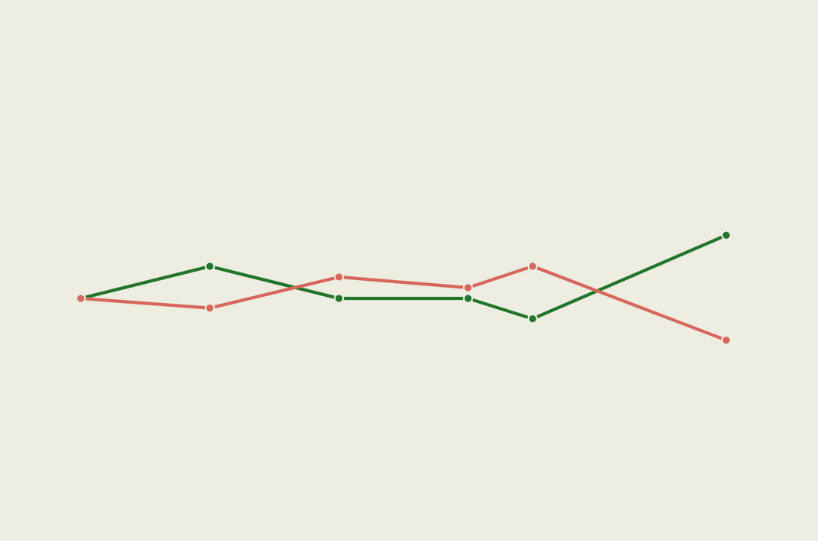Summary: Measuring Public and Middle Class Attitudes to Democracy and Markets
Summary: Measuring Public and Middle Class Attitudes to Democracy and Markets
An AS/COA discussion on January 28 discussed key findings from the Latin American Public Opinion Project’s recently released AmericasBarometer 2012 survey.
Speakers:
- Lisa M. Schineller, Managing Director, Latin American Sovereign Ratings, Standard & Poor's
- Mitchell A. Seligson, Centennial Professor of Political Science and Professor of Sociology (by courtesy); Director, Latin American Public Opinion Project, Vanderbilt University
- Elizabeth J. Zechmeister, Associate Professor, Political Science; Associate Director, Latin American Public Opinion Project, Vanderbilt University
- Christopher Sabatini, Editor-in-Chief, Americas Quarterly; Senior Director of Policy, Americas Society/Council of the Americas (moderator)
Summary
An AS/COA discussion on January 28 focused on the results of Vanderbilt University’s Latin American Public Opinion Project’s (LAPOP) recently released AmericasBarometer 2012 survey, which was conducted in 26 countries across the Western Hemisphere. LAPOP Director Mitchell A. Seligson and Associate Director Elizabeth J. Zechmeister discussed key findings on popular opinions toward the economy, tolerance, corruption, and support for democracy in the Americas. Lisa Schineller, Standard & Poor’s managing director of Latin American Sovereign Ratings, analyzed the implications of LAPOP’s findings for investment and financial markets. The panel explored the correlation between public attitudes toward political systems and market stability and investment ratings.
[[nid:48994]]
Survey Breakdown
In outlining LAPOP’s latest AmericasBarometer results, Zechmeister explained that the organization surveys biannually and has interviewed 178,864 respondents since the first survey in 2004. LAPOP researchers conduct household surveys in every country except the United States and Canada. In these two countries, online electronic questionnaires are used. Annually, LAPOP surveys a minimum of 1,500 households in each country and findings are released with a 2.5 percent margin of error.
The Middle Class
Zechmeister noted that the 2012 survey measured a significant statistical increase in terms of a positive views of economies among Latin American respondents—particularly those in South America. LAPOP determined that this was primarily due to a decrease in wealth inequality and an increase in the number of people who self-identify as middle class. As such, respondents were more optimistic about their personal finances and the economies of the countries they live in.
Schineller added that the improvement in investment stability in Latin America correlates with the findings on middle class confidence. The number of investment-grade countries in the region jumped from 35 percent in 2008 to 85 percent today, she noted. Since 2003, 50 million people in Latin America moved into the middle class category, according to the World Bank. Sabatini acknowledged that “middle class” is a contested term, but said World Bank standards and the self-identification of the middle class are related.
The decrease in income inequality can be attributed to good governance in the face of external threats, Zechmeister noted. Conditional cash transfers—subsidies that depend on variables such as a child’s completion of school—have been especially effective in decreasing income inequality. While economic inequalities persist, Zechmeister observed that there is strong support for policies that aim to reduce inequality, such as gender quotas and affirmative action for government positions.
Corruption, Democratic Stability, and the Role of the State
Seligson said that while the survey’s 2012 results showed lower levels of corruption than in previous years, the downward trend from 2004 to 2010 was reversed. Because household incomes have remained stable, government officials guilty of corruption have not been held accountable by their constituents, he noted. When there is substantial income loss, government officials are more likely to face judicial prosecution or electoral defeat.
For democratic stability to exist, the majority of the population must believe in and support the system, Seligson explained. Most of the population must also be tolerant of the rights of minorities. Given these conditions, LAPOP predicted the democratic crisis in Honduras before the political unrest occurred in 2009. When a population supports the political system but is not tolerant of minorities, the country may head in an authoritarian direction, said Seligson. Paradoxically, LAPOP’s findings show that in countries that are governed well, people tend not support a strong state role, while in countries with mismanagement, many support large government.
Schineller highlighted the fact that market-based analysis does not take democracy into account when considering investment rankings. Political stability, transparency, and the ability to generate economic benefits for a broad section of the population are the primary considerations for determining a rank. Ratings agencies do not always use democracy as a useful indicator for economic stability.
Political Stability in Venezuela
LAPOP concluded that while authoritarian tendencies are high in Venezuela, democracy is at a low risk of breaking down. Seligson noted that support for democracy has been consistently high in Venezuela, and that few express mistrust in the electoral process. Most people feel that the executive branch is listening to their concerns, which was not the case before President Hugo Chávez took office in 1999. However, there is concern about unrest and an impending transition among the country’s population, especially given the uncertainty surrounding Chávez’s health.








